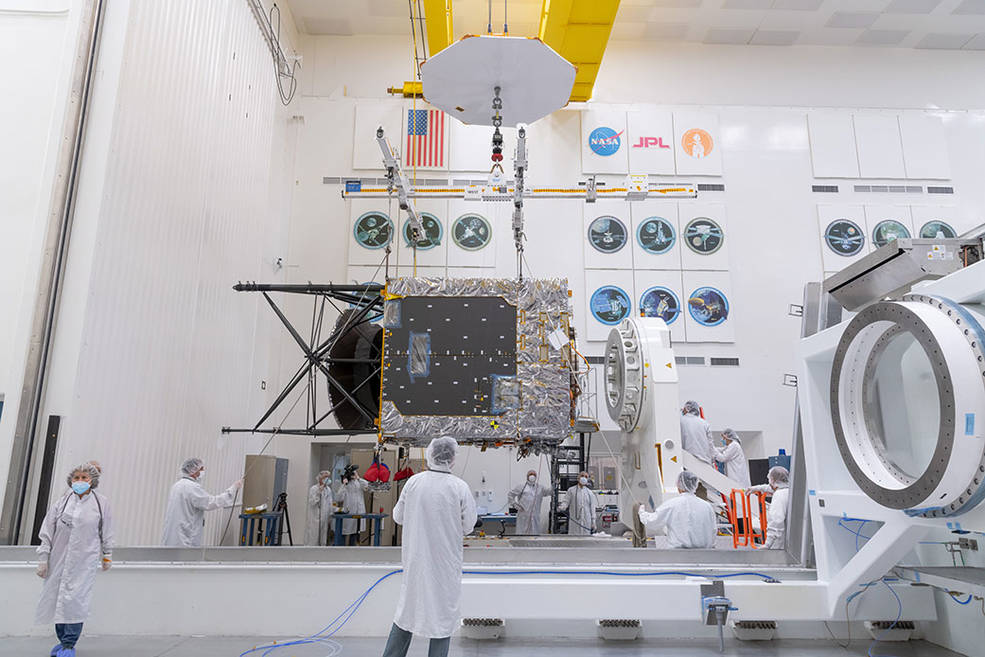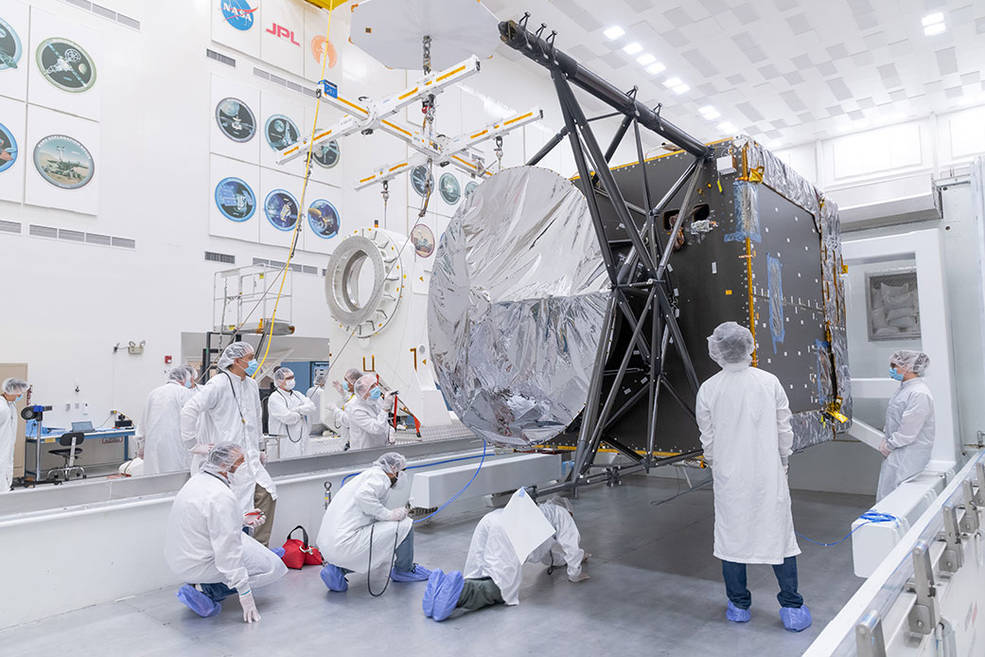Nasa is building a spacecraft to reach an asteroid worth $10 quintillion
The rock is floating in the asteroid belt between Mars and Jupiter
Nasa has officially begun the final assembly of its Psyche spacecraft, which will explore an asteroid of the same name worth $10 quintillion.
The space agency shared images and video of the craft being put together from itsJet Propulsion Laboratory in Southern California. The process should take a year before it is shipped to Cape Canaveral in Florida to launch, scheduled for August 2022.
The news follows the shipment of the Solar Electric Propulsion (SEP) Chassis to the laboratory, which is the key component of the spacecraft. The large structure – approximately the size of a van – features a two-meter-wide high-gain antenna, a massive frame that will hold scientific instruments, and red protective covers to safeguard delicate components.
Assembly began on 16 March, when engineers examined the subsystems, the flight computer, the communications system, and the low-power distribution system to ensure they all worked in harmony. With the arrival of the chassis, the remaining hardware can be tested and installed.
“Seeing this big spacecraft chassis arrive at JPL from Maxar is among the most thrilling of the milestones we’ve experienced on what has already been a 10-year journey,” said Arizona State University’s Lindy Elkins-Tanton, the principal investigator of the Psyche mission.
“Building this complex, precision piece of engineering during the year of Covid is absolutely a triumph of human determination and excellence.”
The assembly of the craft will not be easy, with scientists working against the clock to get it ready before launch date. “It’s exciting watching it all come together, and it’s the part of the project life cycle that I love the most,” said Psyche Project Manager Henry Stone of JPL.
“But it’s a really intense phase as well. It’s intricate choreography, and if one activity runs into a problem, it can impact the whole process. Staying on schedule at this phase of the mission is absolutely critical.”

Some aspects have been made easier, though: the SEP Chassis has most of the hardware components already integrated, such as the electrical, propulsion, thermal, and guidance and navigation system.
This was handled by Maxar Technologies, which also gave the craft a superefficient propulsion system to push it through space – as well as two huge, five-panel solar panels to keep it running.
“Delivering the SEP Chassis to NASA’s JPL is an incredible accomplishment for us at Maxar,” said Steven Scott, Maxar’s Psyche program manager.

“I am so proud of our team. We’ve managed to design and build an SEP spacecraft for a billion-mile journey through a low-power environment, all while prioritizing the health and safety of our team during a global pandemic. The collaboration between Maxar, Arizona State University, and NASA’s JPL is a model for success, and we’re honored to be part of the Psyche Mission.”
Once the full spacecraft is assembled, it will need to move to JPL’s large thermal vacuum chamber to be tested under conditions similar to deep space - ensure the craft can survive the environment, test the electric thrust, take science measurements, and communicate effectively.
The spacecraft will have to travel around 179.5 million kilometres to reach the asteroid, examining its magnetic field and the neutrons and gamma rays radiating from the surface.
If all goes well, the spacecraft will pass by Mars for a gravity assist in May 2023, and reach orbit by early 2026. It will spend 21 months there, gathering data on the valuable space rock, which was found in October 2020.
At approximately 140 miles in diameter – approximately one quarter the length of the entire United Kingdom – the asteroid is one of the largest objects in the belt.
It is likely composed totally of iron or nickel, as opposed to the ice and rock of most asteroids, and as such could shed light on the history of other planets due to its similarity to the Earth’s core – as well has having a value10,000 times more than the 2019 global economy.
Join our commenting forum
Join thought-provoking conversations, follow other Independent readers and see their replies
Comments


Bookmark popover
Removed from bookmarks